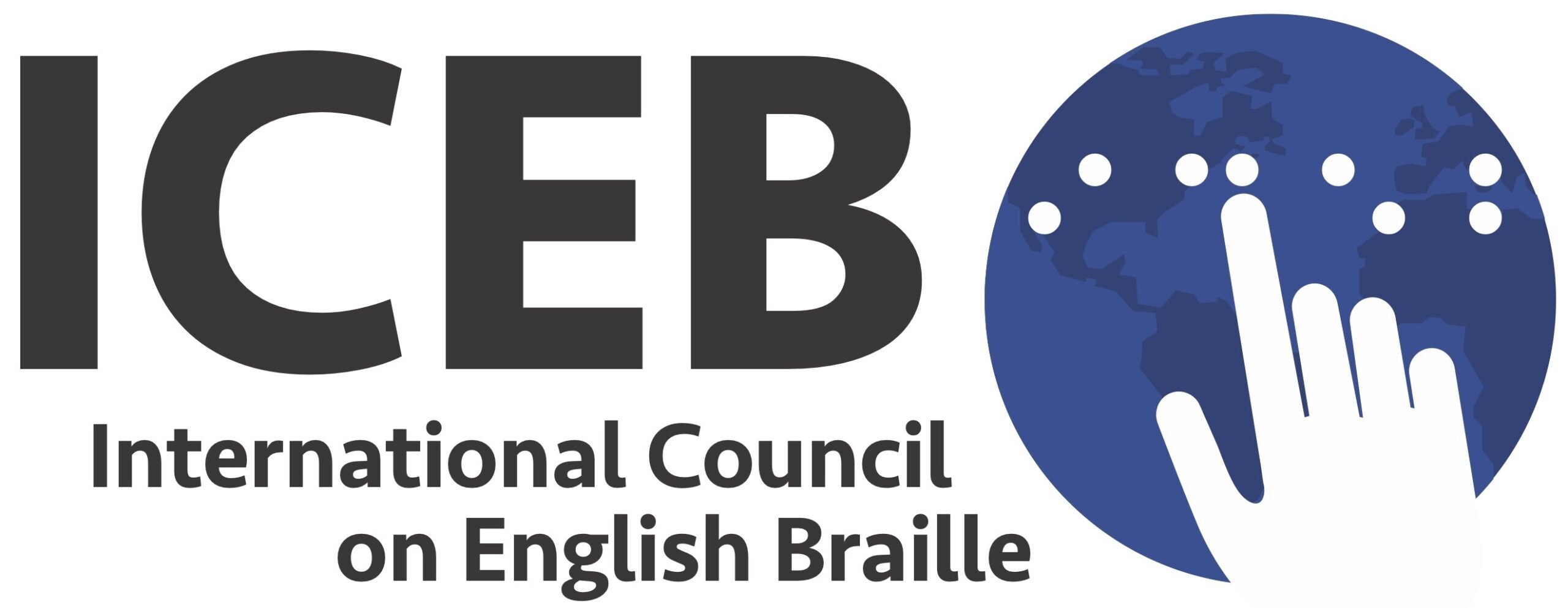Updated 2018
Quick links: ICEB home, Committees, Contact Us, Site Map
The International Council on English Braille advocates for mandatory use of braille for all important signage and product labelling. Braille provides a means of immediate and independent access to information for people who are blind or have low vision.
Signage for buildings and public access
Braille and tactile signs in Australia must comply with the Disability Access to Premises (Buildings) Standards (2010), or, in cases where those Standards are not applicable, with the relevant provisions of Australian Standard AS1428.1-2009 (Design for Access and Mobility). Braille and tactile signs are required in new or upgraded public buildings to identify key wayfinding points. Uncontracted UEB braille with capitals is used. As of 2017, the Australian standards are under review in consultation with the Australian Braille Authority.
There is no federal legislation dealing with braille signage or labelling in Canada. As a first step, Braille Literacy Canada have developed Accessible Signage Guidelines recommending best practice for the design of accessible signage. These guidelines recommend provision of braille and high-contrast tactile signage for wayfinding, emergency information and operating instructions in public areas. Braille should be uncontracted Unified English Braille (UEB) with the exception of English sentences longer than 10 words, which may be in contracted UEB.
In New Zealand, the Blind Foundation is updating its accessible signage guidelines to take account of some updated research around visual contrast since they were first published. The Braille Authority of New Zealand Aotearoa (BANZAT) has had input into the draft update.
South Africa does not have standards for braille signage. The South African Braille Authority (SABA) has met with the South African Bureau of Standards, who should lead the process of putting standards in place.
The international standard for braille signage, “Accessible Design – Application of braille on signage, equipment and appliances” (ISO 17049:2013), was adopted in the UK in October 2013. It specifies the fundamental requirements for braille used on signage, equipment and appliances, including the dimensional parameters of braille and the characteristics of materials used, and the guidelines for practical implementation.The standard is available for purchase from the British Standards Institute (BSI).
In the USA, the Americans With Disabilities Act (1990) contains standards for braille signage. Public lodgings constructed since 1993 are required to provide braille signage for lift buttons, outside lifts designating the floor, and on the latch side of the door for public facilities such as food service areas, meeting rooms, restrooms and emergency exits. Braille signage is contracted.
Taxis
In Australia, the Disability Standards for Accessible Public Transport (2002) Paragraph 17.7 state that “raised taxi registration numbers must be placed on the exterior of passenger doors [of taxis] forward of the door handle”. Braille is not required but is often included.
Taxis in New Zealand are required to display braille information, however this requirement is under review with a reform to bring taxi companies, Uber and other small vehicle services under one set of rules.
Pharmaceutical packaging
The EU Council Directive 2004/27/EC (Article 56a) states that pharmaceutical labelling must be made available in braille. This Directive relates to all medicinal products that are available for human use and are intended to be placed on the market in the EU Members States. Iceland, Lichtenstein and Norway are also implementing this directive.
The EU has recommended a braille specification referred to as the Marburg Medium for the production of Braille labels on pharmaceutical packaging. This specification sets out the braille cell dimensions, spacing and dot size. Uncontracted braille is recommended to be used on all packaging. It is also required by the Can-Am Pharmaceutical Braille Standard for the USA and Canada.
The National Council of the Blind of Ireland (NCBI) Library and Media Centre offers a braille training course for pharmaceutical companies. This is a practical course which allows the delegates to learn about uncontracted braille. The delegates are able to work with braille, to spot errors, and detect issues that might become a problem when producing braille on pharmaceutical labels. By 2017, the NCBI had worked with over 20 pharmaceutical companies and trained over 60 delegates in braille label production. When a delegate completes the course, they are given a certificate which is approved by the Irish Medicines Board.
There are no requirements for inclusion of braille on packaging in other countries, however it is often featured on pharmaceutical products internationally.
In the case of the Patient Information Leaflet (PIL), the X-PIL service for provision in braille, audio or large print is available for patients in the UK and Ireland, with thanks to work by the RNIB and NCBI.
Banknotes
ICEB is pleased to note that tactile markings on bank notes are becoming much more common worldwide, enabling easier identification by people with a vision impairment.
Australia is progressively introducing tactile markings on all of its new banknotes. One or more raised bumps are located along the long edges to allow identification of the denomination with one bump for $5, two bumps for $10 and so on.
Canadian currency features full braille cells in the upper left corner of the face side of its banknotes, with one cell for $5, two cells for $10 and so on.
All Chilean banknotes have tactile features in one corner.
Banknotes in China and Hong Kong include Chinese braille.
The new Euro notes feature tactile strips along one edge.
Malaysia has tactile markings on the bottom left corner of its banknotes. The number of horizontal or vertical raised lines varies signifies the denomination.
The new 10 pound note in England and Scotland have tactile markings.
Brazil, Thailand, Malawi, and Bahrain use embossing to ensure their banknotes can be distinguished by touch readers.
Other packaging
Braille menus in restaurants and braille labelling in stores are not required by law but are a welcome service offered voluntarily by some businesses.
ICEB contact informationICEB home page
Page content last updated: May 21, 2019.
